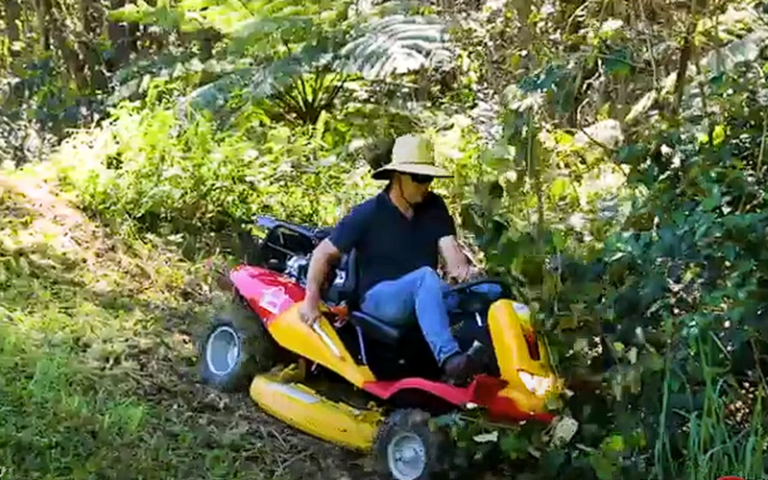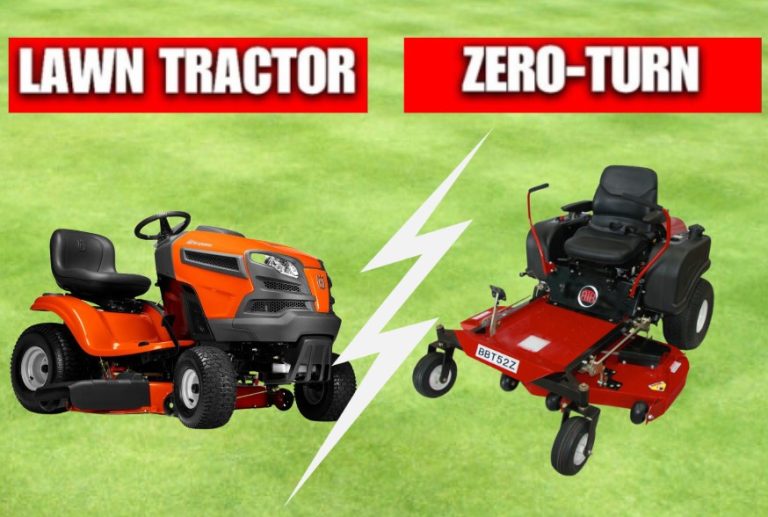Stand-On Mower vs. Zero-Turn Mower: Which Is Right For You?
When it comes to maintaining large lawns, commercial properties, or expansive landscapes, the choice between a stand-on mower and a zero-turn mower can significantly impact your mowing efficiency and overall experience. Both types of mowers offer distinct advantages, but understanding their differences is crucial for making an informed decision. In this article, we’ll dive into the key features, benefits, and considerations of stand-on mowers and zero-turn mowers to help you determine which is the better choice for your needs.
What Is a Stand-On Mower?

A stand-on mower, also known as a stand-on or stand-up mower, is a type of riding mower where the operator stands rather than sits. These mowers are designed for enhanced maneuverability and visibility, making them ideal for tackling various types of terrain and tight spaces.
Key Features of Stand-On Mowers:
- Operator Position: As the name suggests, the operator stands on a platform behind the mower. This design provides excellent visibility and allows for quick adjustments in speed and direction.
- Compact Design: Stand-on mowers are typically more compact and agile than traditional riding mowers, making them suitable for navigating narrow spaces and obstacles.
- Enhanced Maneuverability: The stand-on position offers superior control over the mower’s movements, particularly in tight areas and around obstacles.
- Reduced Fatigue: While standing may seem less comfortable than sitting, many stand-on mowers come with padded platforms and ergonomic controls that reduce operator fatigue over long periods.
What Is a Zero-Turn Mower?

A zero-turn mower is a type of riding mower that uses a unique steering mechanism allowing it to make tight turns and navigate around obstacles with minimal effort. Zero-turn mowers are highly regarded for their speed and maneuverability, making them a popular choice for professional landscapers and homeowners with large properties.
Key Features of Zero-Turn Mowers:
- Zero-Turn Steering: Zero-turn mowers are equipped with independent wheel controls, enabling them to pivot on the spot and make precise turns without leaving uncut grass.
- Comfortable Seating: Unlike stand-on mowers, zero-turn mowers come with a comfortable, adjustable seat that provides ample support during long mowing sessions.
- High-Speed Performance: These mowers are known for their speed and efficiency, allowing users to cover large areas quickly.
- Stability and Balance: Zero-turn mowers often have a lower center of gravity, providing stability on uneven terrain.
Stand-On Mower vs. Zero-Turn Mower: A Comparative Analysis
1. Maneuverability and Speed
- Stand-On Mowers: Stand-on mowers excel in maneuverability due to their compact size and the operator’s ability to adjust their stance quickly. They are particularly effective in navigating tight spaces and around obstacles. However, they may not match the zero-turn mower’s speed.
- Zero-Turn Mowers: Zero-turn mowers are designed for rapid, precise turns, making them ideal for covering large areas efficiently. Their zero-turn capability allows for intricate maneuvers, reducing the need for manual adjustments and enabling faster completion of mowing tasks.
2. Comfort and Ergonomics
- Stand-On Mowers: While standing can be less comfortable than sitting, stand-on mowers are designed with ergonomic features to minimize operator fatigue. The standing position may also offer better visibility and control.
- Zero-Turn Mowers: The seating on zero-turn mowers provides superior comfort, particularly for extended periods. The adjustable seat and suspension systems are designed to absorb vibrations, making the mowing experience more comfortable.
3. Terrain and Stability
- Stand-On Mowers: Stand-on mowers are versatile and can handle various terrains, including slopes and uneven ground. Their lower profile and compact design contribute to stability and balance.
- Zero-Turn Mowers: Zero-turn mowers are typically stable on flat, even terrain but may struggle with steep slopes or uneven surfaces. Their larger size and higher center of gravity can affect stability in challenging landscapes.
4. Storage and Transport
- Stand-On Mowers: Due to their compact size, stand-on mowers are easier to store and transport. They can fit into tighter storage spaces and are generally lighter than zero-turn mowers.
- Zero-Turn Mowers: Zero-turn mowers are larger and may require more storage space. Their size can also make them more challenging to transport, particularly if you have limited trailer space.
5. Cost and Value
- Stand-On Mowers: Stand-on mowers are generally more affordable than zero-turn mowers. They offer good value for money, especially if you need a versatile mower for tight spaces and various terrains.
- Zero-Turn Mowers: Zero-turn mowers tend to be more expensive due to their advanced features and high-speed performance. They are a worthwhile investment for those who prioritize efficiency and comfort over cost.
Refer to the article: the 8 Best Zero Turn Mowers for Hills for a more comprehensive overview.
Making Your Decision

Choosing between a stand-on mower and a zero-turn mower ultimately depends on your specific needs and preferences. Here are some factors to consider when making your decision:
- Mowing Area Size: For larger properties where speed and efficiency are critical, a zero-turn mower might be the better option. For smaller or more complex areas with tight spaces, a stand-on mower could be more suitable.
- Terrain Type: Evaluate the type of terrain you’ll be mowing. If you frequently navigate uneven ground or slopes, consider the stability and maneuverability of each mower type.
- Budget: Consider your budget and weigh the cost against the features and benefits of each mower. Stand-on mowers offer a more budget-friendly option, while zero-turn mowers provide advanced features at a higher price.
- Comfort and Ergonomics: Assess the comfort features of each mower, especially if you plan to spend extended periods mowing. Zero-turn mowers offer superior seating comfort, while stand-on mowers prioritize maneuverability.
Conclusion
Both stand-on mowers and zero-turn mowers have their unique advantages, and the right choice depends on your specific needs and preferences. Stand-on mowers are ideal for those who value maneuverability, compact design, and cost-effectiveness, while zero-turn mowers excel in speed, comfort, and precision. By considering factors such as terrain, budget, and mowing area size, you can make an informed decision and choose the mower that best suits your requirements.
Whether you opt for the agility of a stand-on mower or the efficiency of a zero-turn mower, investing in the right equipment will enhance your mowing experience and help you achieve a beautifully maintained lawn or landscape.

Michael Anderson is a lawn care professional with many years of experience in the industry. His journey began in his family’s landscaping business, where he developed a passion for gardening and outdoor maintenance. Michael specializes in helping homeowners tackle challenging terrain, focusing on the best equipment and techniques for effective lawn care.
In 2024, he founded bestzeroturnmowerforhills.com to share his knowledge and help others find the ideal zero turn mower for hilly landscapes. His commitment to providing unbiased reviews and practical advice has made him a trusted resource for gardening enthusiasts.





